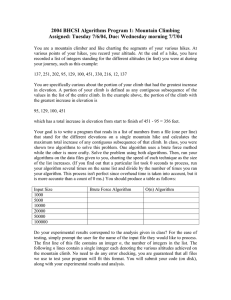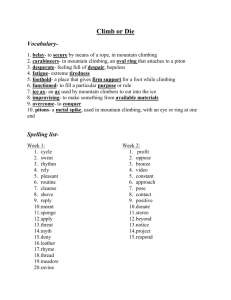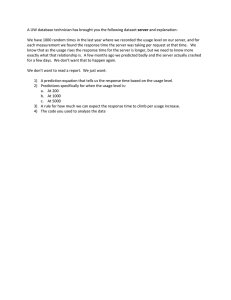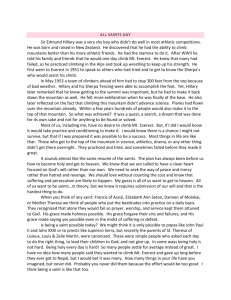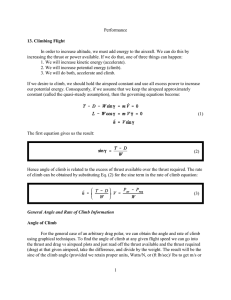BHCSI Algorithms Program: Mountain Climbing
advertisement
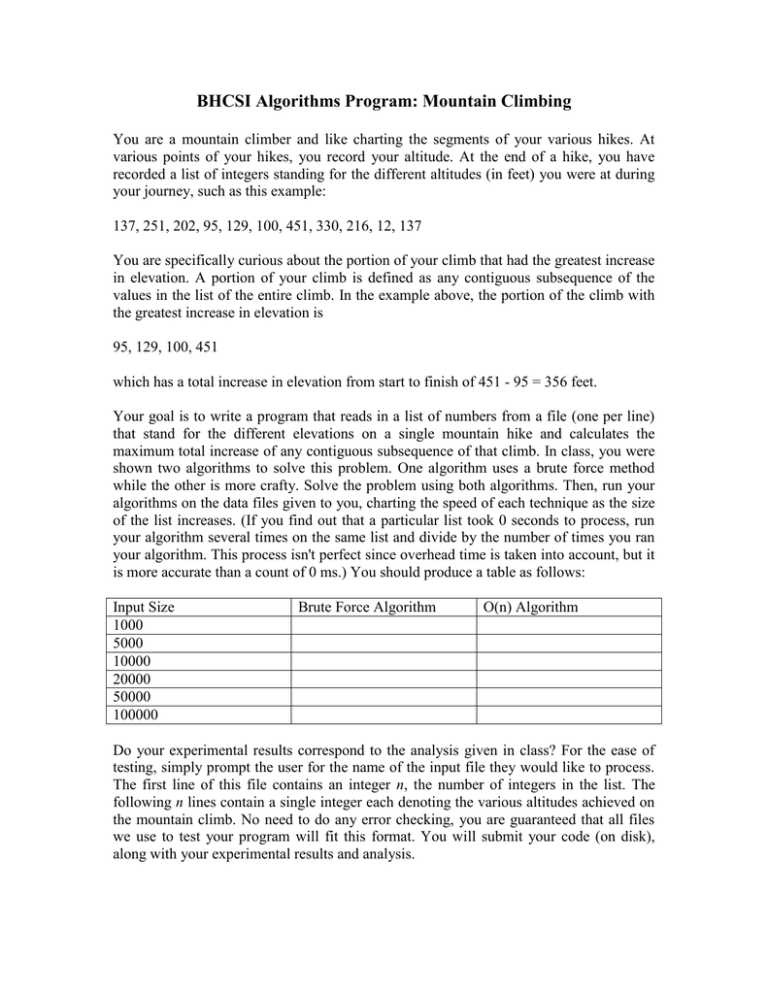
BHCSI Algorithms Program: Mountain Climbing You are a mountain climber and like charting the segments of your various hikes. At various points of your hikes, you record your altitude. At the end of a hike, you have recorded a list of integers standing for the different altitudes (in feet) you were at during your journey, such as this example: 137, 251, 202, 95, 129, 100, 451, 330, 216, 12, 137 You are specifically curious about the portion of your climb that had the greatest increase in elevation. A portion of your climb is defined as any contiguous subsequence of the values in the list of the entire climb. In the example above, the portion of the climb with the greatest increase in elevation is 95, 129, 100, 451 which has a total increase in elevation from start to finish of 451 - 95 = 356 feet. Your goal is to write a program that reads in a list of numbers from a file (one per line) that stand for the different elevations on a single mountain hike and calculates the maximum total increase of any contiguous subsequence of that climb. In class, you were shown two algorithms to solve this problem. One algorithm uses a brute force method while the other is more crafty. Solve the problem using both algorithms. Then, run your algorithms on the data files given to you, charting the speed of each technique as the size of the list increases. (If you find out that a particular list took 0 seconds to process, run your algorithm several times on the same list and divide by the number of times you ran your algorithm. This process isn't perfect since overhead time is taken into account, but it is more accurate than a count of 0 ms.) You should produce a table as follows: Input Size 1000 5000 10000 20000 50000 100000 Brute Force Algorithm O(n) Algorithm Do your experimental results correspond to the analysis given in class? For the ease of testing, simply prompt the user for the name of the input file they would like to process. The first line of this file contains an integer n, the number of integers in the list. The following n lines contain a single integer each denoting the various altitudes achieved on the mountain climb. No need to do any error checking, you are guaranteed that all files we use to test your program will fit this format. You will submit your code (on disk), along with your experimental results and analysis.
